-
Content count
723 -
Joined
-
Last visited
Posts posted by Blambo
-
-
What if Chewie died and Han rescued another wookie from the pound.
-
I've been watching Gintama because it was discussed on our 'cast.
Man it's funny I am liking it a lot??
This may not apply to you but if you think that big action serious arcs ruin what you like about it, be prepared to skip 130 out of the 261 episodes.
-
Yeah I feel like putting too fine a point on it destroys the conversation, and I've been kind of afraid of being overly dismissive. Still though.
-
The thing is I can't really put that aspect aside and it kind of ruins it for me because I really like every other part of the show. So I can definitely talk about other interesting bits but the most salient part of that show for me is the stylistic dissonance. My bad for exaggerating!
-
I'm not sure about shirobako, since all I have to say about it is my hating moe. Though granted I'm not very far into it.
-
Hey, that's... A Lot of Shit. Are some of the tasks delegatable?
-
A Procedural Procedural
Content soon.
-
Americanised English is the easy mode of language.
Learning it though is Legendary Ironman mode.
-
Fuck off that's too good -
Wait what the hay, this jam is TWO WEEKS LONG?
I'll definitely make something.
-
Something came up, and I won't be able to make anything this round. But I'll be in the IRC sometimes if y'all need art (?) advice or programming questions!
-
Gorm is taking that section where Chris imitates the rap and turning it into 2015's summer hip hop hit.
-
Thank god for this list. I'm sick of googling "artsy anime".
It's late and I should go to bed, but I'll try to clarify briefly. I think that Mizushima is one of the few directors willing to embrace moé fully in his anime as a means for accomplishing a holistic goal, usually a disruptive pattern of aesthetics or characterization. He uses the Rei-style moé of the main female character in Another to cause the audience to leap to conclusions about her, heightening the hypothetical horror of the turn in the last act. He uses the K-On!-style moé of the main characters in Girls und Panzer to highlight the harshness and mechanization of tank combat, as well as to emphasize the cooperation and camaraderie between members of a tank crew and between tanks in a platoon. He uses the somewhat generic moé of the five main characters in Shirobako as a grounding point for the audience while they take in the world of professional animation (and probably other things, but I haven't had as much time to process Shirobako as I'd like). There are some exceptions to this pattern (and thanks for catching Kujibiki Unbalance on that count, because it has some oddly interesting touches but is overall a weird mess without even good art to save it) but I think that most of his works have a similar "feel" that's distinct among anime of the same subgenre.
Granted, it appears that I was wrong to call him a staff director at PA Works, because he's worked just as much with JC Staff, Production IG, and Hal Film Maker. Maybe I don't really have a bead on his career, but I feel like his niche of "somewhat subversive moé with strong ensemble casts" is noteworthy and it's something that I've picked up in the past. The deciding element would probably be whether he seeks out these projects or they come to him, but even then... Ugh, sometimes I resent the language barrier a great deal, because the only translated interviews with him are about xxxHOLiC and Blood-C, both of which are from before I think his interesting and more coherent output began.
I watched Joshiraku not knowing that it had the same director as Girls und Panzer, and I've only seen Joshiraku of the stuff this director's put out. I super duper liked Joshiraku and thought it was really smart, and didn't lean heavily on the moe thing. I felt like it was mostly due to the fact that the humor was too fast paced and verbal to devolve into horrible moe death. In places it directly played with the moe thing as a dry spectacle and less as a part of the presentation:But on the whole it felt like the director was trying to have his cake and eat it too. I'm not sure if the rest of his portfolio is like this, but it kind of prevents me from seeing this kind of thing as a serious subversion of the trope. -
Yeah, I definitely don't have a solid idea, so grouping up with somebody about now would be ideal.
-
Haha it's funny that my rant in any way helped you build a coherent thought because I typed it out in a blinding fit of nerd rage. You and Gorm would be awesome cogent core hosts to balance out my appearances as a blathering ideologue.
Eh I think your post came off fine, don't worry about it. Have you seen Gundam SEED BTW? Everyone looks the same in that show except for extras and older guys getting narrower eyes.
I haven't, though a cursory google image search kind of makes me want to avoid it. I don't like the aesthetic in general, and making it gender equal won't faze that. But I think it's really funny to have guy-chan designs in the mix too.
-
Mouth Flaps is amazing, I second (third?) it.
-
I feel like moe has crossed the line from plausible abstraction of a human being into platonic ideal territory, since its defining features achieve more than let the audience project themselves onto the design. You can achieve the Understanding Comics effect without deliberately giving a character puppy dog eyes, a small mouth, a sexed up physique, and an arsenal of cute qualities.

The most extreme moe design isn't solely an abstraction of the human figure to help the audience project onto the character. That effect can be achieved with the most minimal abstractions
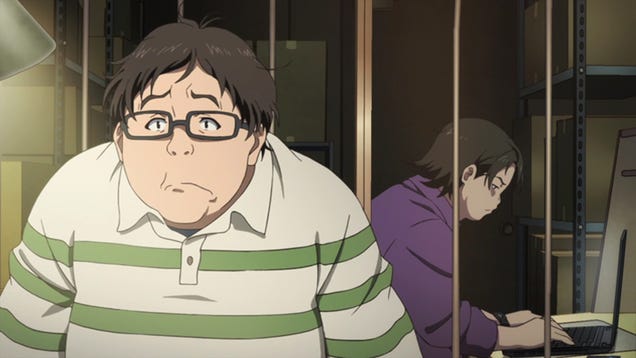
while retaining a sense that the design reflects specific human features. The reasons behind this

probably have nothing to do with avoiding objectification.
-
So I feel like in the last few weeks I solidified my thoughts on moe.
I think for any visual media, a character's appearance and design forms the bedrock of any person's understanding of the character as time goes on. When the audience has to reconsider or refactor the way that they interpret any character, they go back to first impressions and visual cues, along with all the unconscious baggage that those come with. This is unavoidable. My issue with moe is that it's an extremely strong visual trope designed to be disarming and endearing, which is going to be the touchstone for any moe character regardless of their actions or traits.
A straight A honors student is smart and capable to offset the lack of intimidating features. A cold, quiet girl is so in contrast to her babyish looks. The most bloodthirsty, coldhearted, dangerous killer is going to be that despite the fact that she's adorable and looks like a high school girl. That modifier is going to exist no matter how hard you push on the former part. This base, immutable feature of the character taints every subsequent impression the audience has of that character, and the fact that it's used to disarm and endear so liberally, so perfunctorily, and almost exclusively on women, creates a situation where you can have a cast of extremely dynamic characters that have a variety of extreme traits, nuances, and strengths, and it all sums up to a set of characters that have no character weight and consequently no gravitas because of their base line of damning, disarming, adorable appearance and personality. It's a set of barbie dolls packed with all sorts of accessories.
Moe does this because the design trope has way more characterizing weight than anything you can balance it out with. Making a character moe without looking at how it affects its impression just feels like overseasoning a dish. Even if you can make the most delicious fois gras in the world, coating it in paprika will make it only taste like paprika. But if you've had your tongue coated in paprika for the last ten years, you'll probably stop tasting it. It makes sense that it takes someone who's watched a lot of anime to be able to discern the subtle plots and interactions that could possibly be in there, and why it's so hard for people just getting into anime to see why it's not just lonely nerd bait. It's why it's so separate from what people would consider mainstream culture, and I think it's an example of an industry collectively racing to the bottom. It might be obvious but I think that the industry's reliance on merchandising and selling sex/moe is self perpetuating.
Then there's the issue where it's only female characters that are given such a strong treatment, which makes male characters have a more liquid subconscious impression and seem more like actual human beings, the implications of which are just ugly.
Anyway this is probably not universal to everyone and my rambling is probably too authoritative in tone so I'll apologize in advance.
TLDR; moe is a really really really strong visual touchstone that can water down any subsequent personality trait if used gratuitously.
EDIT: wow that was a long and abrasive post for something I could have summed up in a more compact, less pretentious sentence.
-
Hi I just started Shirobako, and I know this has been discussed in this thread before but:
(huge image, had to spoiler it)
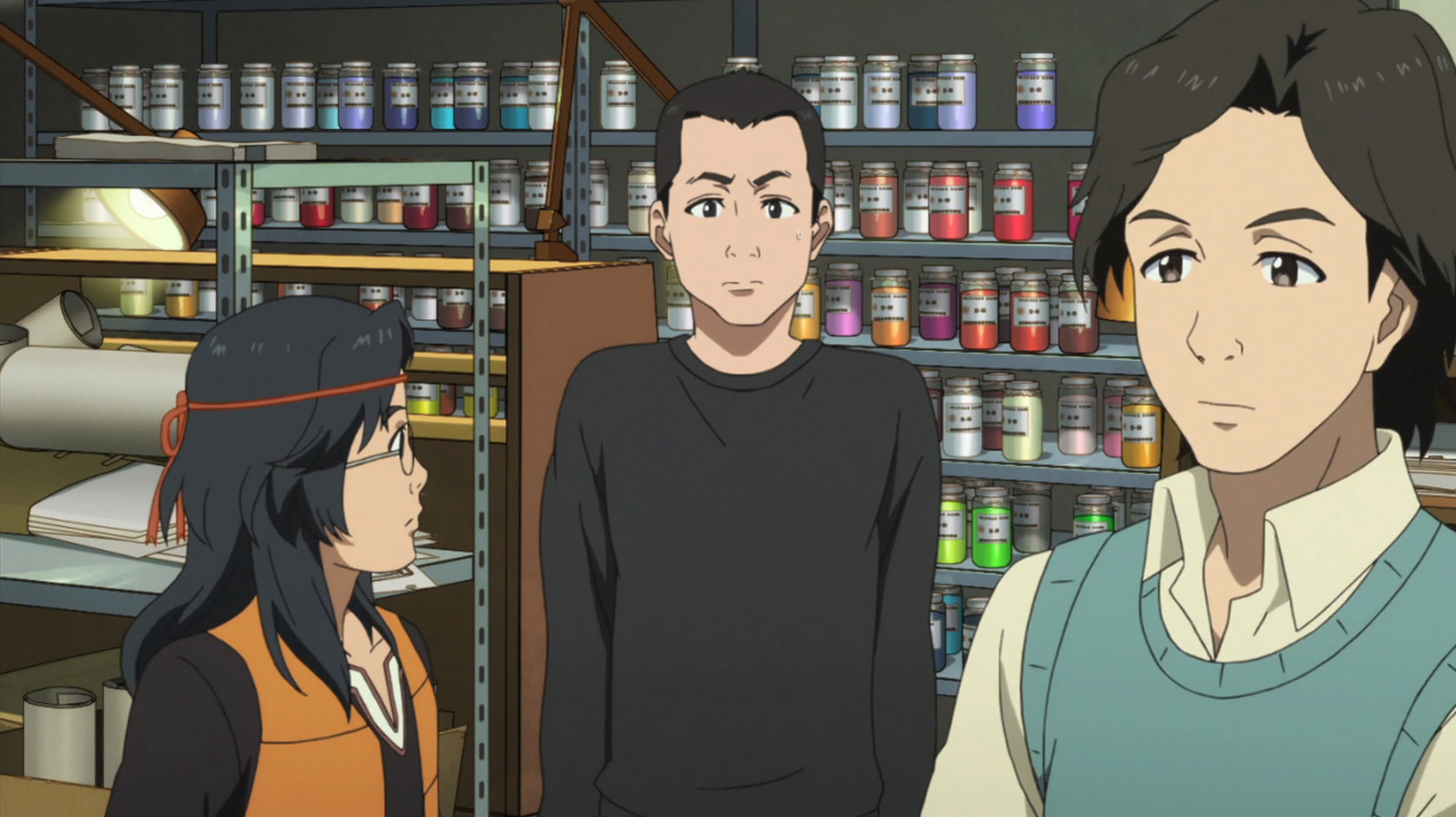
VS:

It doesn't bother me (as much) when all of the characters in an anime are dolled up or caricatured
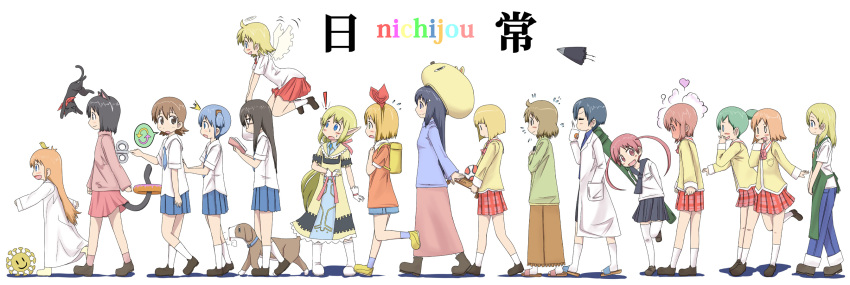
But having a mix of milquetoast people (usually guys) and hypermoe-one-body-type-buy-a-figurine dolls (usually girls) highlights the pandering character design choice in every anime that just feels exploitative and aggressively male oriented. The anime looks fun and really interesting but I would enjoy it 200% more if it gave care to overall aesthetics rather than focus grouped character designs.
It furthers that feeling of regular looking people being the audience surrogate and the cute dolls (all the women, every woman) being the show, fulfilling roles and being cute rather than existing as autonomous characters, no matter how much agency they have in the actual plot.
I would even be a little more okay with making all the women extremely attractive if it weren't that incredibly overdone look.
I'm tooting a very tooted horn but I'm genuinely curious. Is the moe thing so integral to the financial success of a series that it must exist for anything to succeed? I've come off of the idea that moe is the devil itself, but it's the gratuitousness that bothers me. If it's used for an actual purpose, then fine.
-
Though to match the criteria of podcast topics you outlined above, I think a constant air of existential anxiety is perfect.
By the way I'm preempting the inevitable "Hi I'm you're Host in the Shell" pun. Now nobody can soil history with that phrase.
-
Requesting position of person who hates anime and wants to talk about his self loathing for loving anime.
-
I haven't seen Death Parade yet, but the original Death Billiards short felt downright Satoshi Kon-esque.
*gasp*
*cursor hovers over torrent client*
-
I am idiot
Hear me roar!
-
I had word limits so I didn't get to dig as deep as I wanted to but:
1.) Fight Club absolutely was enjoyed on a way different level than what Fincher or Palahniuk intended, even though it was explicitly shown as such. (So I agree on this point.)
2.) Hotline Miami says very little, but it attempts to say something and borrows heavily from filmic pieces like Fight Club or Drive but doesn't dig into what either film attempts with consequences or personal responsibility.
3.) A lot of people don't think a lot about any of those three things because they still very slickly make violence voyeuristically cool, and cool to a very specific subset of people
4.) That subset of people tends to be guys, more often guys who think they are profoundly deep or emotional but still want to secretly enjoy violence without thinking about it.
5.) All of the above are still somewhat alienating to me
6.) HLM 1 and 2 are very much products of the time, which is why theory to why 2 was so much more disappointing, just beyond the mechanical failures, it attempts to cash back in on something it barely attempted in the first place narratively or aesthetically, making the franchise as a whole pretty terrible.
I am going to do a post-mortem on this piece expanding on some things that lead me to writing this in the first place so that might give some better coverage to what people disagreed with. HLM was successful because it was a shorter indie game that hearkened back to an earlier time in a lot of young men's lives with 80s style/flair and tight beat-em-up sensibilities with a banging soundtrack. I don't think it went much more beyond that and I daresay it wouldn't have worked as perhaps even a AAA game, in that sense.
Regarding 6): A big reason why I liked HLM was because it contained bits of story and non-violent, direct player interaction, that highlighted and framed the violent action, but I realize now that it was fascinating because at the time that kind of thing wasn't common, especially for the kind of genre HLM strove for. In posterity, it doesn't sit very far on the mechanically progressive scale as I remember. I remember actually on an episode on Idle Thumbs way back when HLM first came out, JP LeBreton commented on how HLM sort of hints that there's a world outside the violence that gives the violence context, but because the majority of the things you could possibly ever do in the game is kill people, the contrast is completely lost. Like a sandwich with 99% peanutbutter and 1% jelly is trying to call itself peanutbutter and jelly by being aware of how peanutbutter it is.
RE 2) An interpretation of HLM that I often see and is most substantial and internally consistent is that It requires the player to completely indulge in it to be meaningful. The short bits of nonviolent story (ie picking up the phone, renting a video, meeting with the tribunal) are meant to tease the player and make them create their own interpretation for what's going on, then flip it upside down with the real last level of the game by saying that the violence is pointless and gratuitous. The events aren't supposed to make sense, and the story is supposed to be vague, but regardless the player kills anyway because that's all you're allowed to do in the game. The player's indulgence in the violence regardless of the thin narrative reasons to do so, and that realization is supposed to be cathartic.
But just like Fight Club, that moment of looking in the mirror after completely indulging in dumb violence and aggression requires that the audience also has to be in the midst of it. which means that a lot of people won't "get" that moment of catharsis, because a big part of the content itself reinforces their own worldview (video games should be violent, society is overfeminized), and they don't take in anything that rejects it, and also because the creator kind of slides that in as an afterthought.
Can't wait for postmortem!
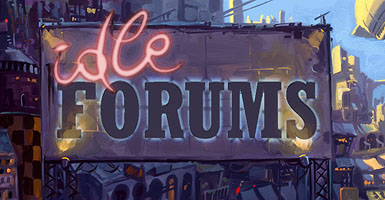
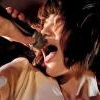
[Release] Introduction To Video Games
in Wizard Jam 1 Archive
Posted
The genuine thanks obamas are what makes this.